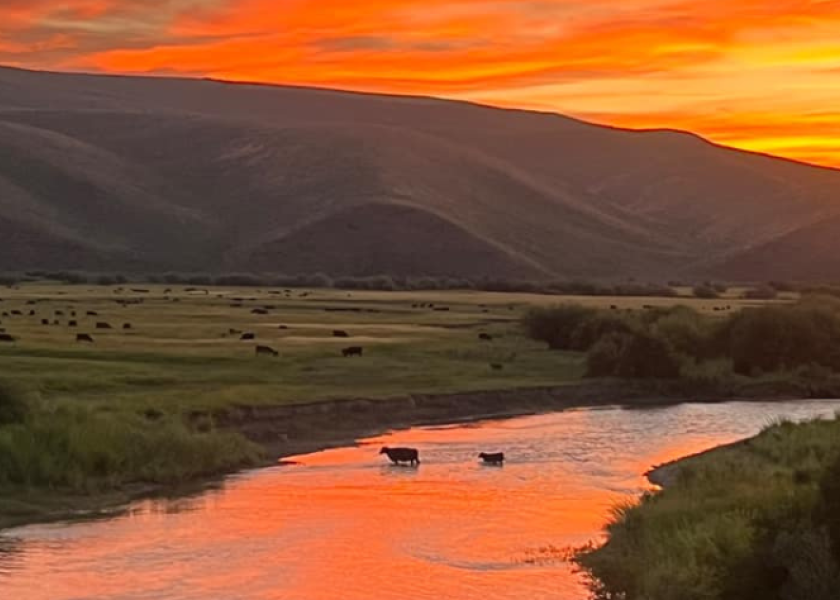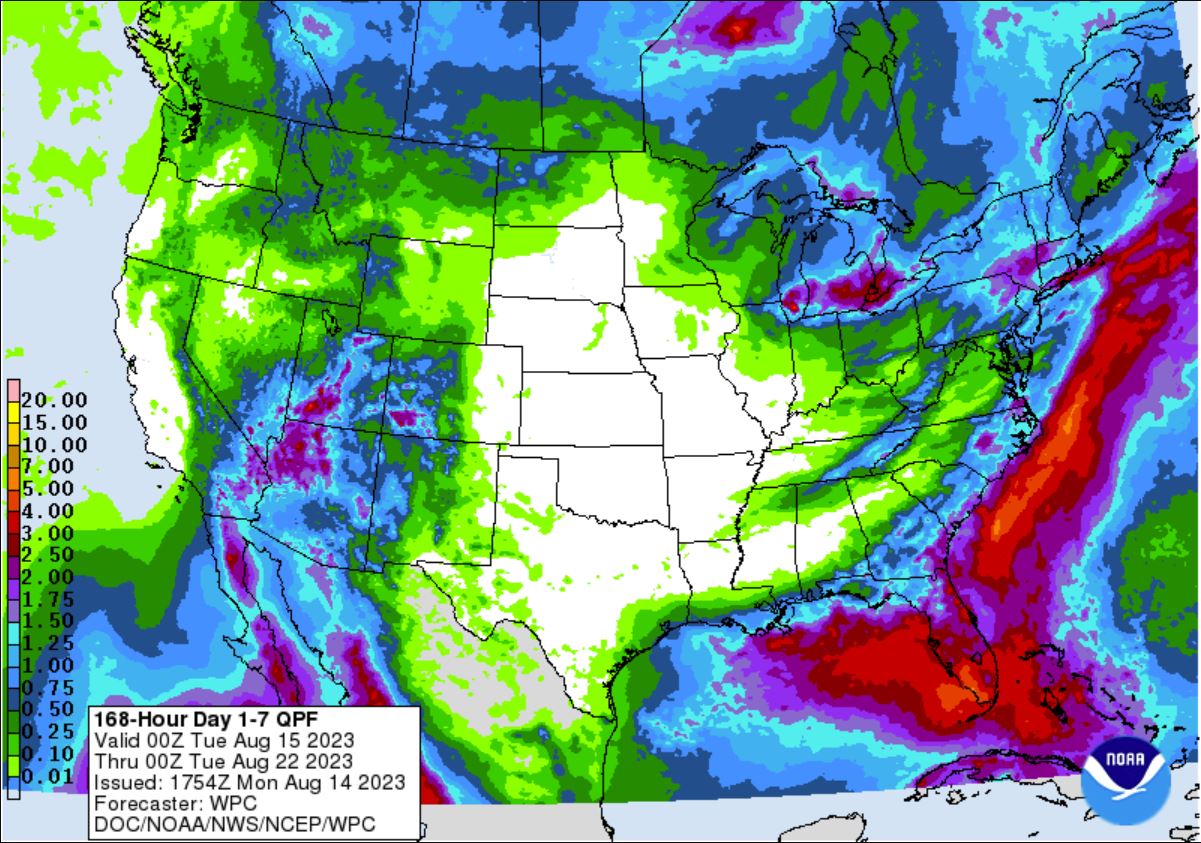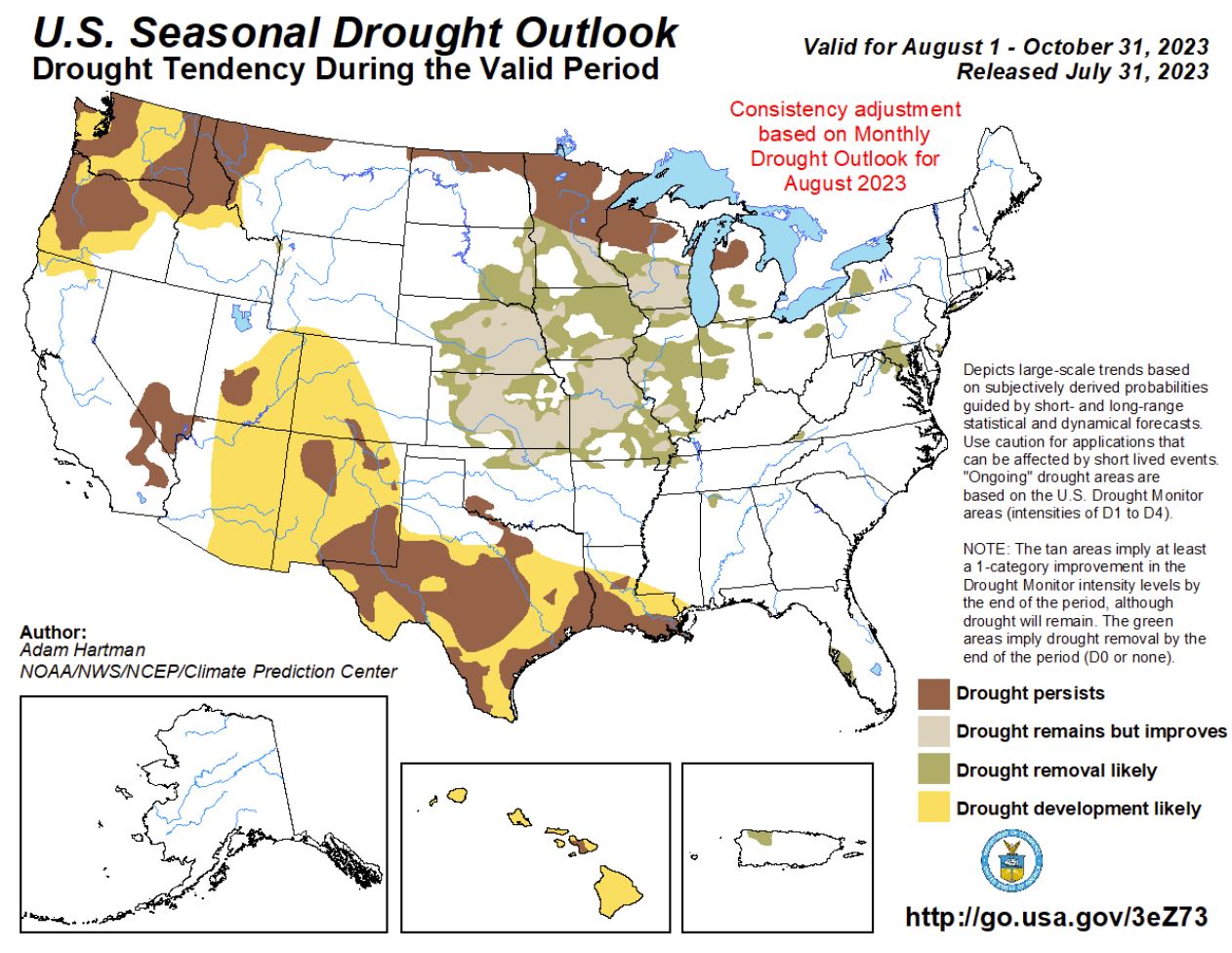Scorched to Belly-High: Cattle Producers' Inside Look at Pasture Conditions

Following over a year of drought across much of cattle country, a recent poll of Drovers readers showed pasture conditions across the U.S and Canada have seen varying degrees of improvement.
According to USDA’s National Agricultural Statistics Service (NASS), as of Aug. 7, pasture and range in the U.S. for 2023 is trending below 2019 conditions, yet higher than those of 2020, 2021 and 2022 for this time of year.
Based on responses from producers across the country, pasture conditions vary greatly by state and within some states.
Specifically, southern Illinois, southwest Iowa, western Michigan, southeast and western Louisiana, northwest Oregon, the eastern half of Texas and northwest Washington report some of the worst pasture conditions.
“Southern Illinois, straight east of St. Louis, the pastures are very poor, but better than they were 2 to 3 weeks ago,” says Austin Farms. “Hay has been producing one-third to one-half the normal rate and we’ve had to feed hay half the summer because there was no pasture. Don’t know what we’ll do this winter.”
Oregon producer, Aaron Ballou, says the creeks are dry in northwest Oregon and the grass that grew has not burned off. Grass yields in the area are less than half of normal.
Additionally, producers in southwest Alabama, north and west-central Missouri, Kansas Flint Hills, central Arizona, southwest Saskatchewan and southeast South Dakota reported lower than average pasture conditions.
Heidi Lange shares a photo from the Flint Hills of Kansas:
West-central Kansas, western and south-central Kentucky, central North Dakota and east-central Saskatchewan producers shared that conditions seem to be holding a steady average.
“Average grass conditions, but creeks and ponds are dry and water wells are drying up,” says Karen and Jim Howland of west central Kansas. “We've been hauling water all summer to a pasture that the solar system can’t keep up.”
Excellent pasture conditions were reported from western Arkansas, northern Georgia, northwest Kentucky, northeast Mississippi, Tennessee, southwest Virginia, northeast and western Colorado, northeast Kansas, much of Nebraska and Oklahoma and south central South Dakota.
However, southwest Nebraska producer Angela Minary-Henne notes the drought is still playing a factor in what could be far better pasture conditions.
“If we didn't have the weed mess we have after drought, it'd be pretty good in southwest Nebraska,” Minary-Henne says.
Meanwhile, cattle producers in the north-central states, including southeast Idaho, southwest and central Montana and Wyoming report some of the best conditions they’ve seen in years.
Kolby Romrell, in southeast Idaho, shares lush pasture in the area:
Sharing the photo below, central Wyoming producer Jody Campbell says, “Best grass I have ever seen in central Wyoming.”
Hanna Kambich of southwest Montana says, "Grass is up to their bellies."
Overall, cattle producers in western Arkansas, west-central Georgia, northeast Mississippi and southwest Montana noted wet conditions in early August. Dry and some drought conditions were reported from parts of the U.S., including southwest Alabama, central Arizona, southwest Iowa, west-central and the Flint Hills of Kansas, southeast Louisiana, west Michigan, Minnesota, Nevada, southeast South Dakota and the eastern half of Texas.
Specifically, producers in Texas note the rains have shut off since middle to late June.
“Scorched since late June,” says Hope for the Rancher located north of Fort Worth, Texas. “Feeding hay. Been feeding hay 22 out of last 25 months. It’s getting old and very costly.”
Pam Newnam Williams in central Texas says pastures are terrible with triple digit temperatures, presenting a severe fire danger.
Based on the National Weather Service (NWS) Weather Prediction Center’s Quantitative Precipitation Forecasts, the next seven days will not likely provide any relief to those states with dry conditions.
Additionally, the NWS Climate Prediction Center’s U.S. Seasonal Drought Outlook shows drought persistence and development across Texas, northern Wisconsin, northern Minnesota, northern North Dakota and the pacific northwest through the end of October. Meanwhile, drought may see some improvement or removal across parts of Kansas, Missouri, Illinois, Iowa, Nebraska, South Dakota, southern Minnesota and southern Wisconsin.
As we approach the fall and winter months, producers should consider options and best practices in their operation, based on current and future forage availability.
See all producers comments and photos in the original post:
Read More:
When Buying High-priced Hay Doesn’t Add Up
Options for Safely Using High-Nitrate Forage: Grazing, Silage and Haying
Now is the Time to Manage Livestock Winter Feeding Areas
Why Consider Drylotting Cows this Fall?










